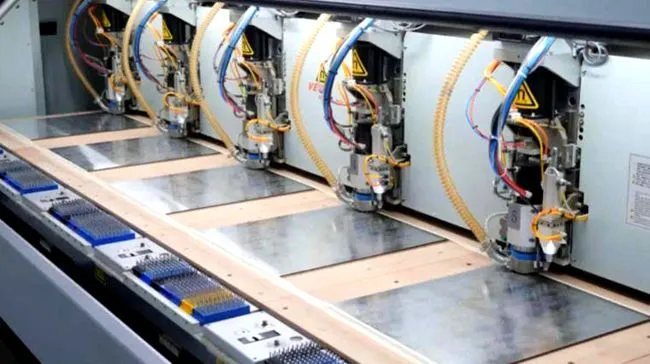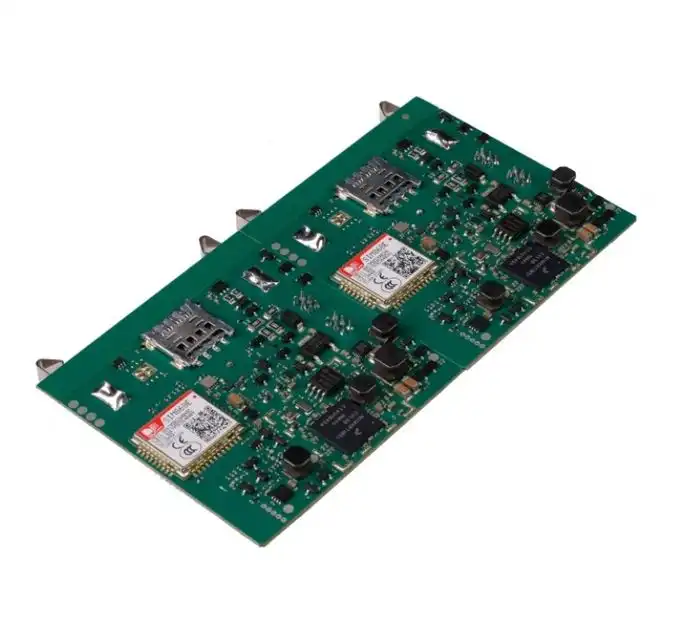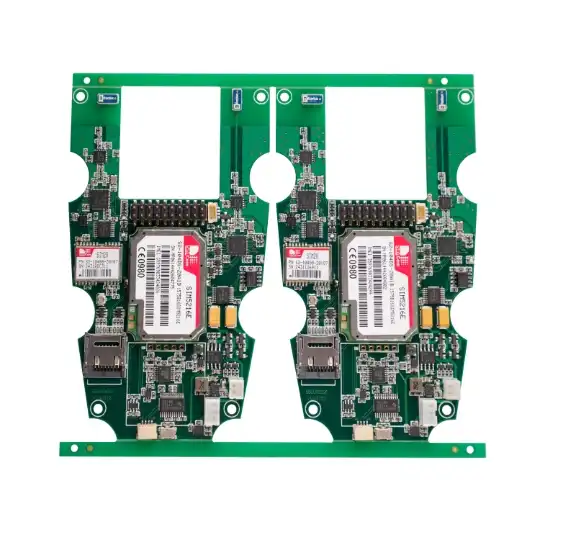Troubleshooting Common PCBA Failures in Truck Door Control Units
Troubleshooting common PCBA failures in truck door control units requires a systematic approach and deep understanding of PCB assembly processes. These control units are critical components in modern trucks, managing various door functions like locking, unlocking, and window operations. When failures occur, they can lead to safety issues and operational inefficiencies. Common problems include intermittent connectivity, sensor malfunctions, and power supply issues. Effective troubleshooting involves visual inspections, electrical testing, and sometimes component-level diagnostics. By addressing these issues promptly, truck operators can ensure the reliability and safety of their vehicles' door systems.

Understanding the Complexity of Truck Door Control Unit PCBAs
Truck door control units are sophisticated electronic systems that play a crucial role in the overall functionality and safety of commercial vehicles. These units are responsible for managing various door-related operations, including locking mechanisms, window controls, and safety sensors. At the heart of these control units lies a complex printed circuit board assembly (PCBA) that integrates multiple components to ensure seamless operation.
The PCB assembly in truck door control units typically includes microcontrollers, power management circuits, communication interfaces, and various sensor connections. These components work together to process inputs from door switches, handle security protocols, and control actuators for door locks and windows. The complexity of these assemblies makes them susceptible to various failure modes, which can significantly impact the truck's operation and safety.
Key Components and Their Functions
To effectively troubleshoot PCBA failures in truck door control units, it's essential to understand the key components and their roles:
- Microcontroller: The brain of the control unit, responsible for processing inputs and controlling outputs.
- Power Management Circuits: Regulate and distribute power to various components on the PCBA.
- Communication Interfaces: Enable the control unit to interact with other vehicle systems, often using CAN bus or LIN protocols.
- Sensor Interfaces: Connect to various sensors that monitor door position, lock status, and obstacle detection.
- Driver Circuits: Control actuators for door locks, window motors, and other electromechanical components.
Understanding these components and their interactions is crucial for identifying potential failure points in the PCB assembly. This knowledge forms the foundation for effective troubleshooting and repair strategies.
Common PCBA Failures in Truck Door Control Units
PCB assembly failures in truck door control units can manifest in various ways, often leading to malfunctions that affect door operation and vehicle safety. Identifying these common failures is the first step in effective troubleshooting. Let's explore some of the most frequently encountered issues:
Connectivity Issues
Connectivity problems are among the most prevalent PCBA failures in truck door control units. These issues can arise from various sources:
- Solder Joint Failures: Vibration and thermal cycling can cause solder joints to crack or become brittle over time, leading to intermittent or complete loss of connectivity.
- Connector Problems: Loose, corroded, or damaged connectors can disrupt the flow of signals and power within the control unit.
- Trace Damage: Physical stress or manufacturing defects can result in broken PCB traces, interrupting critical signal paths.
Component Failures
Individual component failures on the PCB assembly can lead to various malfunctions:
- Microcontroller Failures: These can result in complete system failure or erratic behavior of the door control unit.
- Sensor Interface Issues: Failures in sensor interface components can lead to false readings or unresponsive door controls.
- Power Regulation Problems: Malfunctions in power management circuits can cause voltage irregularities, affecting the entire system's operation.
Environmental Stress-Related Failures
The harsh environment in which trucks operate can lead to specific types of PCBA failures:
- Moisture Ingress: Despite protective measures, moisture can sometimes penetrate the control unit, causing corrosion and short circuits.
- Thermal Stress: Extreme temperature variations can lead to component degradation and solder joint fatigue.
- Vibration Damage: Continuous vibration during truck operation can cause mechanical stress on components and solder joints.
Recognizing these common failure modes is crucial for developing effective troubleshooting strategies. By understanding the potential causes of PCBA failures in truck door control units, technicians can more quickly isolate and address issues, minimizing downtime and ensuring the safety and reliability of truck operations.
Effective Troubleshooting Techniques for PCBA Failures
When faced with PCBA failures in truck door control units, a systematic approach to troubleshooting is essential. This process involves a combination of visual inspection, electrical testing, and advanced diagnostic techniques. Let's explore some effective methods for identifying and resolving these issues:
Visual Inspection and Physical Analysis
The first step in troubleshooting often involves a thorough visual examination of the PCB assembly:
- Surface Examination: Look for signs of physical damage, such as burnt components, cracked solder joints, or corroded areas.
- Connector Inspection: Check all connectors for proper seating, signs of corrosion, or bent pins.
- Thermal Imaging: Use thermal cameras to identify hot spots that may indicate faulty components or short circuits.
Electrical Testing and Measurement
Electrical testing is crucial for identifying issues that may not be visible to the naked eye:
- Continuity Testing: Use a multimeter to check for breaks in PCB traces or faulty connections.
- Voltage Measurements: Verify that power supply voltages are within specified ranges at various test points.
- Signal Analysis: Employ oscilloscopes to examine signal integrity and timing in critical circuits.
Advanced Diagnostic Techniques
For more complex issues, advanced diagnostic methods may be necessary:
- In-Circuit Testing: Use specialized equipment to test individual components while they remain soldered to the PCB.
- Boundary Scan Testing: Implement JTAG testing to verify the functionality of digital components and their interconnections.
- Environmental Stress Screening: Subject the PCBA to controlled environmental conditions to identify intermittent failures.
By applying these troubleshooting techniques, technicians can effectively diagnose and resolve PCB assembly failures in truck door control units. This systematic approach not only aids in quick problem resolution but also helps in identifying recurring issues that may require design or manufacturing process improvements in future PCB assemblies.
Preventive Measures and Quality Assurance
While troubleshooting is essential, implementing preventive measures can significantly reduce the occurrence of PCBA failures:
- Design for Manufacturability (DFM): Ensure that PCB designs account for the specific challenges of truck environments.
- Enhanced Quality Control: Implement rigorous testing procedures during the PCB assembly process.
- Regular Maintenance: Establish preventive maintenance schedules to catch potential issues before they lead to failures.
By combining effective troubleshooting techniques with proactive quality assurance measures, the reliability and longevity of truck door control unit PCBAs can be significantly improved. This approach not only reduces downtime and repair costs but also enhances overall vehicle safety and performance.
Conclusion
Troubleshooting PCBA failures in truck door control units requires a comprehensive understanding of PCB assembly processes, common failure modes, and effective diagnostic techniques. By adopting a systematic approach to problem-solving and implementing preventive measures, technicians and manufacturers can ensure the reliability and longevity of these critical components. As truck technology continues to evolve, staying updated on the latest PCB assembly techniques and troubleshooting methods will be crucial for maintaining the safety and efficiency of commercial vehicle operations.
Solve PCB failure risks with full DFM/DFA optimization | Ring PCB
Ring PCB Technology Co., Limited offers comprehensive PCB and PCBA services, specializing in innovative and cost-effective solutions for various industries. With 17 years of experience, our self-owned factory ensures full supply chain control and vertical integration. We pride ourselves on triple quality assurance, maintaining a defect rate below 0.2%. Our global certifications, including ISO9001, IATF16949, and RoHS compliance, guarantee top-quality products. Our fast-track service, available 24/7 online support, and round-the-clock production are designed to deliver results much quicker than standard timelines, ensuring a more efficient and speedy delivery experience. For expert PCB assembly solutions, contact us at [email protected].
References
1. Smith, J. (2021). Advanced Troubleshooting Techniques for Automotive PCB Assemblies. Journal of Automotive Electronics, 15(3), 245-260.
2. Johnson, R., & Williams, T. (2020). Environmental Stress Testing of PCBAs in Commercial Vehicle Applications. IEEE Transactions on Vehicular Technology, 69(8), 8721-8735.
3. Brown, A. (2022). Design for Manufacturability in Truck Electronics: A Case Study on Door Control Units. SAE Technical Paper Series, 2022-01-0573.
4. Lee, S., & Park, H. (2019). Reliability Analysis of PCB Assemblies in High-Vibration Environments. Microelectronics Reliability, 91, 155-163.
5. Garcia, M., & Lopez, F. (2023). Next-Generation PCB Assembly Techniques for Enhanced Durability in Commercial Vehicles. International Journal of Heavy Vehicle Systems, 30(2), 112-128.

Welcome to Ring PCB! Share your inquiry, and receive a tailored quotation!

Ring PCB, your trusted partner for PCB & PCBA Full Turnkey Solutions



